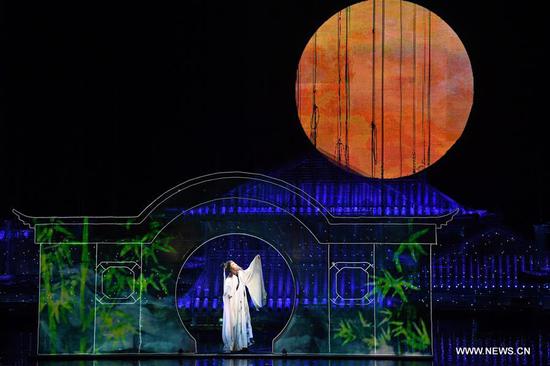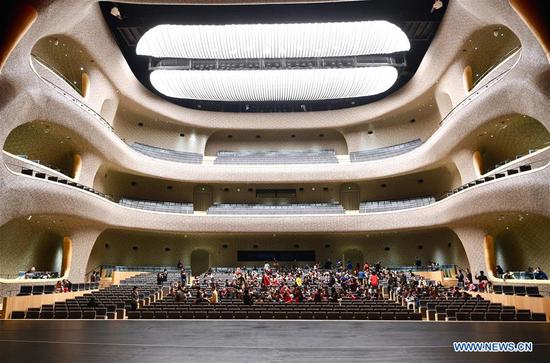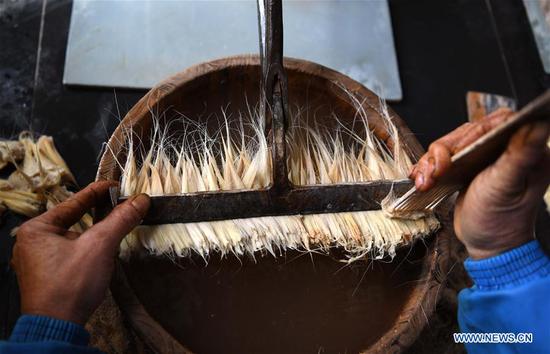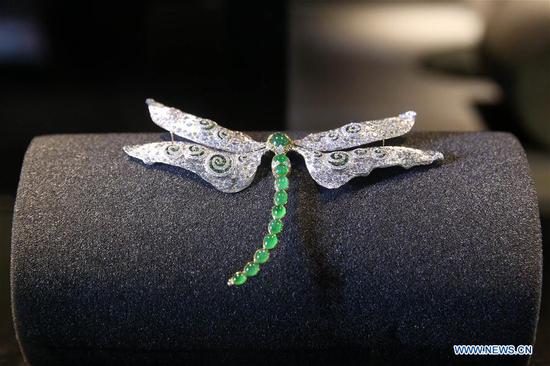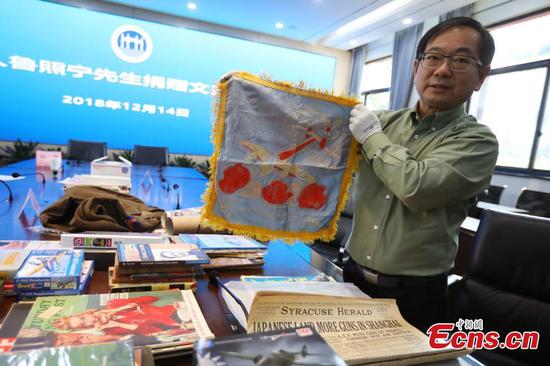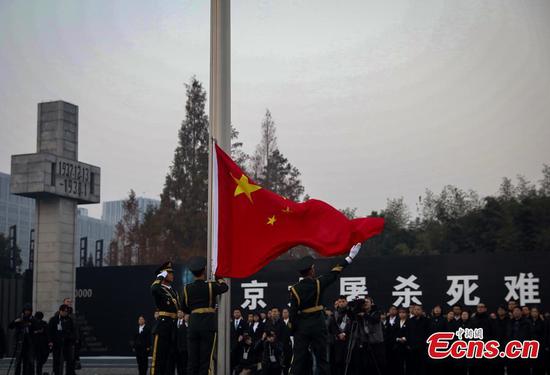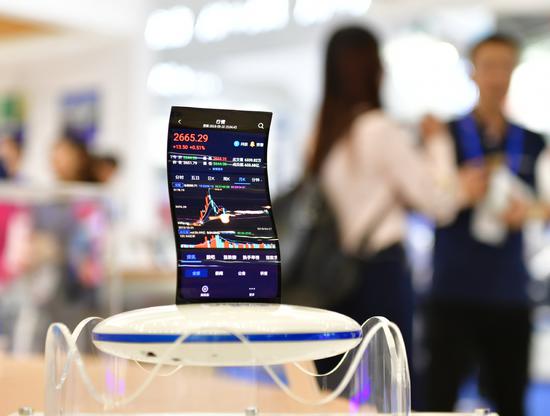
A flexible foldable mobile phone screen on display at an international high-tech fair in Shenzhen. (Photo by Xuan Hui/For China Daily)
Smartphone makers are betting big on foldable screens that fit into a pocket to revive a market mired in an innovation lull and a sales slump.
Samsung Electronics Co Ltd revealed its much-anticipated foldable phone, which is a tablet when it is fully opened and becomes a smartphone when closed, at the company's annual developers' conference in San Francisco in November.
It uses a new display technology called Infinity Flex Display that allows users to open and close the device a countless number of times without degradation.
Koh Dong-jin, president of IT & Mobile Communications at Samsung Electronics, said the company will release the foldable phone within the first half of next year, and the first batch to be delivered will have at least 1 million units. The company is set to produce more if the new product is well received in the market.
"We have been living in a world where the size of a screen could only be as large as the device itself," said Justin Denison, Samsung's senior vice-president of mobile product marketing. "We have just entered a new dimension."
According to IDC, a global market consultancy focusing on technology, smartphone makers shipped 355.2 million units during the third quarter of 2018, down 6 percent year-on-year, the fourth consecutive quarter of year-on-year declines for the global smartphone market.
Samsung had a challenging quarter with shipments down 13.4 percent to 72.20 million units. The market leader continues to feel pressure from all directions, especially with Huawei Technologies Co Ltd inching closer to the top after its second consecutive quarter as the No 2.
The South Korean technology giant is not the only phone maker working on foldable devices. Royole Corp, a Shenzhen, Guangdong province-based panel manufacturer, has announced its first foldable smartphone FlexPai, which features a 7.8-inch AMOLED display with a resolution of 1920 x 1440 pixels and an aspect ratio of 4:3.
The smartphone manufacturer claims that users can bend its foldable display more than 200,000 times without the screen breaking. Royole is hoping to sell early versions of its FlexPai foldable-screen phone for $1,300 to $1,500 once it launches in the United States-something that won't happen until next year, at the earliest.
Industry insiders say foldable smartphones will be the development direction in the next 10 years. Huawei reportedly plans to release a foldable handset next year.
Lenovo Group Ltd and Xiaomi Corp have also started their own prototypes, and LG Group is also working on flexible OLED displays and TVs that roll up into a box.
Huawei has said its first foldable smartphone will work in 5G networks, and this handset will likely resemble the Huawei Mate 20X. Oppo Electronics Corp will show off its foldable phone at the Mobile World Congress in 2019 to be held in Barcelona near the end of February next year.
"The challenge of foldable mobile phones lies in the foldable AMOLED panels, especially in terms of folding tolerance and radius. Secondly, the material of the cover plate will also be a bottleneck. How to maintain a similar size, especially thickness, with the current mainstream smartphone product, is also a problem" said Qiu Yubin, vice-president of WitsView Research.
BOE Technology Group Co Ltd, a Beijing-based supplier of display products and solutions, commenced mass production of sixth-generation flexible AMOLED display screens at its facility in Chengdu, Sichuan province, last October.
According to BOE, its display panels have already been delivered to more than 10 smartphone manufacturers including Huawei, Oppo, Vivo Mobile Communication Technology Co, Xiaomi Inc, ZTE Corp and Nubia Technology Co Ltd.











